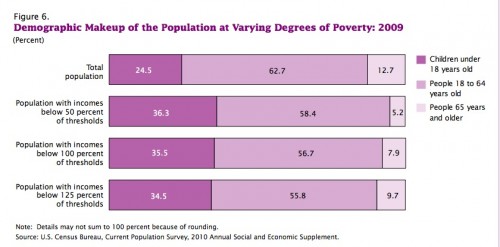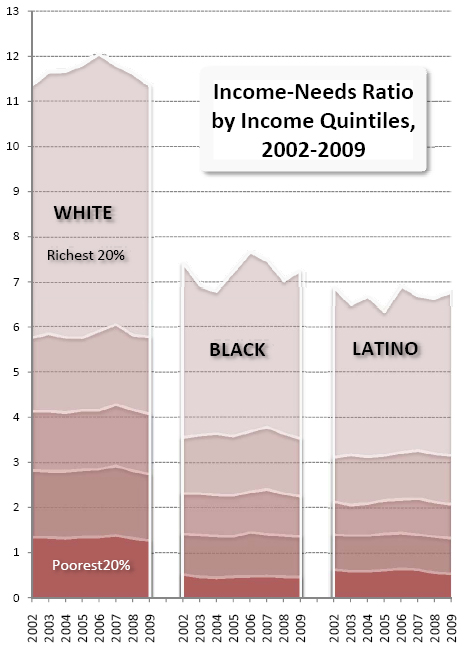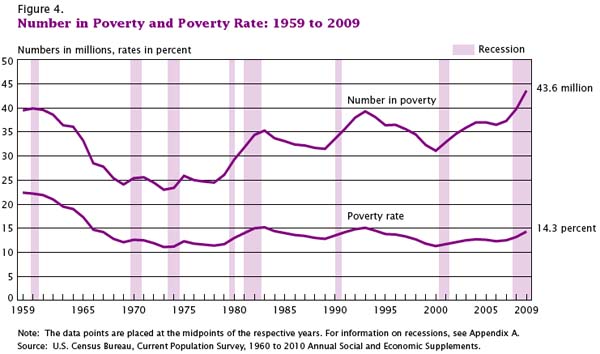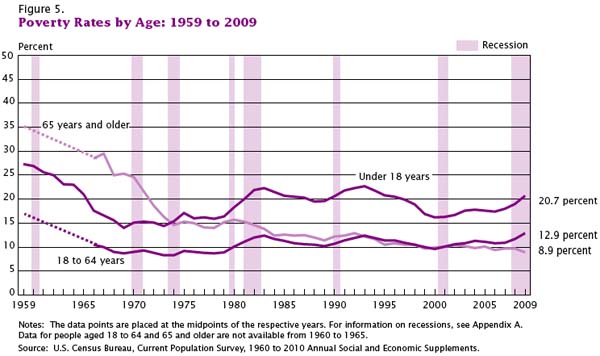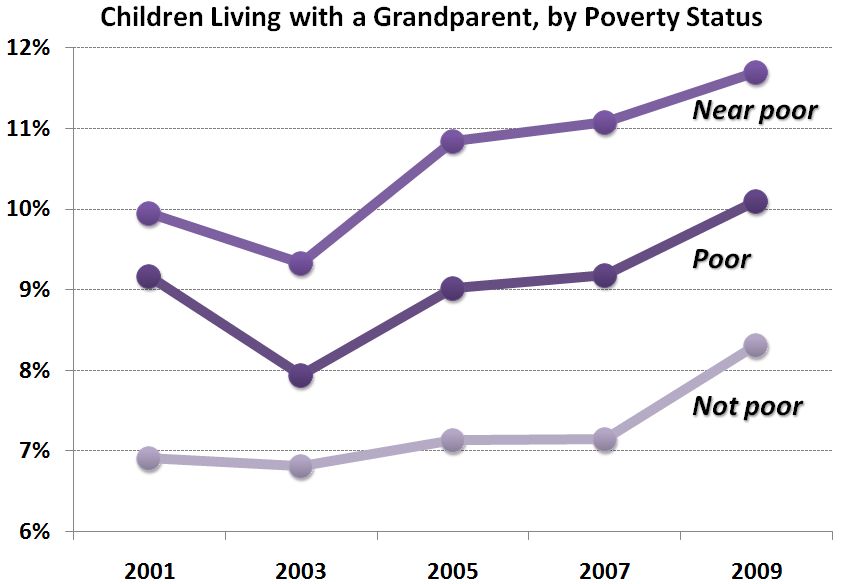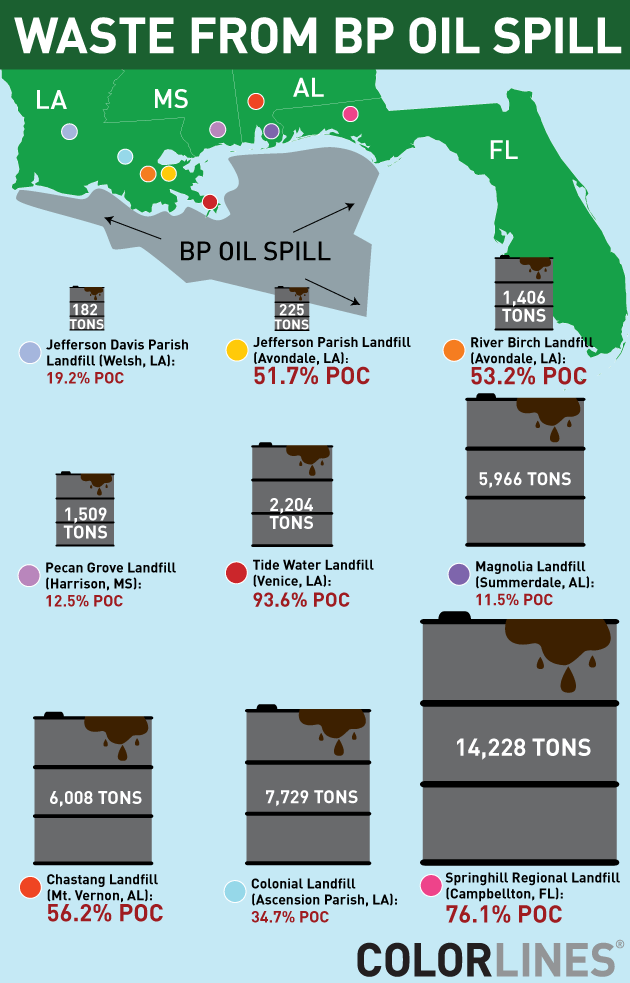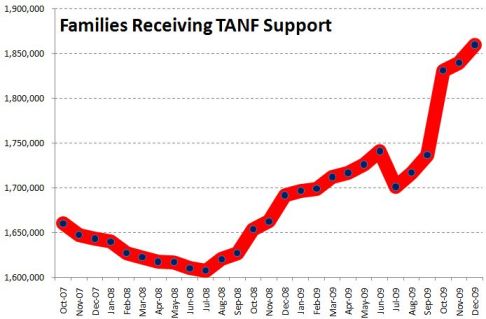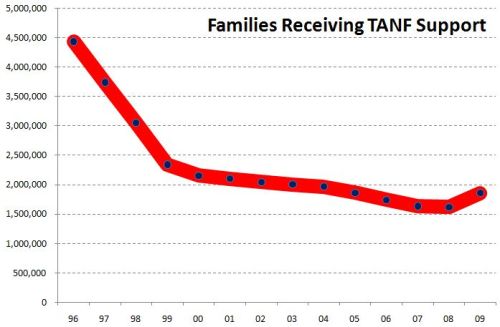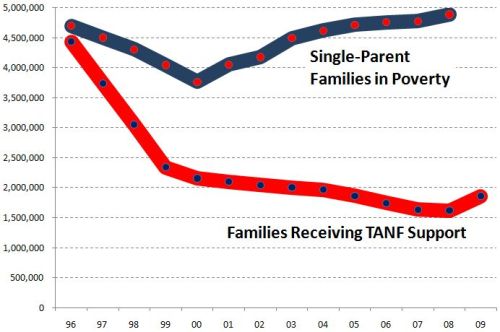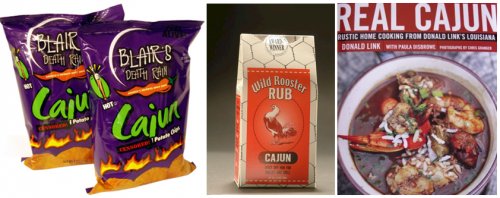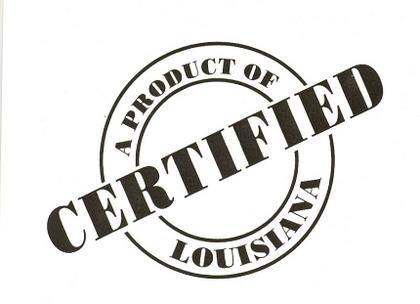Rick T. sent in a link to a post at Global Research about some new U.S. Census data about 2009 poverty rates. As is usually true, children suffer higher levels of poverty than other age groups:
Poverty is significantly higher for African Americans than for the U.S. population overall — notice the Y axis goes up to 45%, whereas above it ends at 30%:
From the post:
Being American gives you a one in seven chance of being poor. Being young raises this chance to one in four. Further, being black in America means a one in four chance of being poor. Being young and black raises your chance of being poor up to one in 2.5.
Not surprisingly, poverty is highly related to education level:
I went to the original Census report and grabbed some more images. This graph makes the over-representation of children among the poor even more obvious:
There’s tons of information in the report if you’re interested in the demographics of poverty in the current economic recession.




